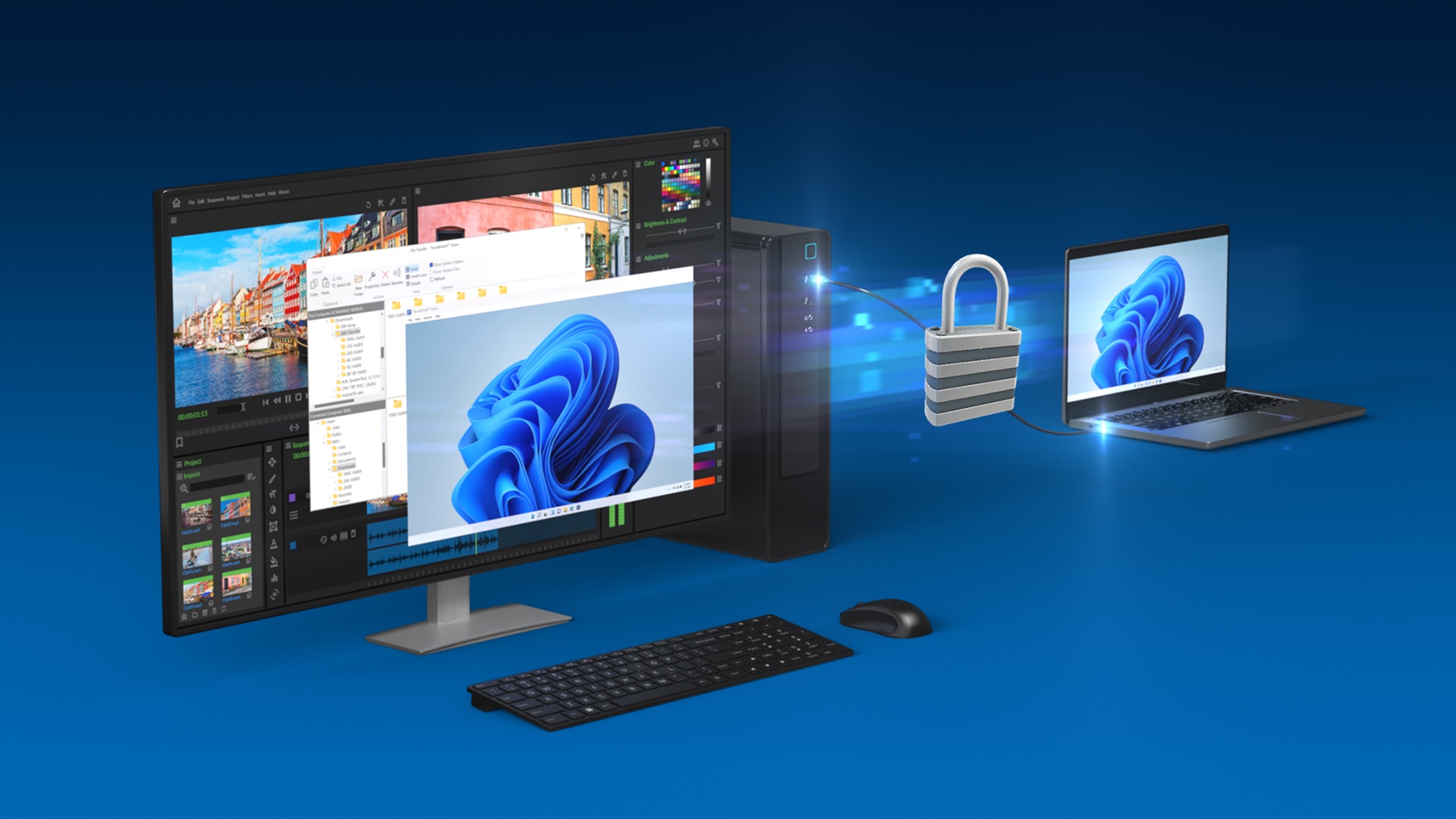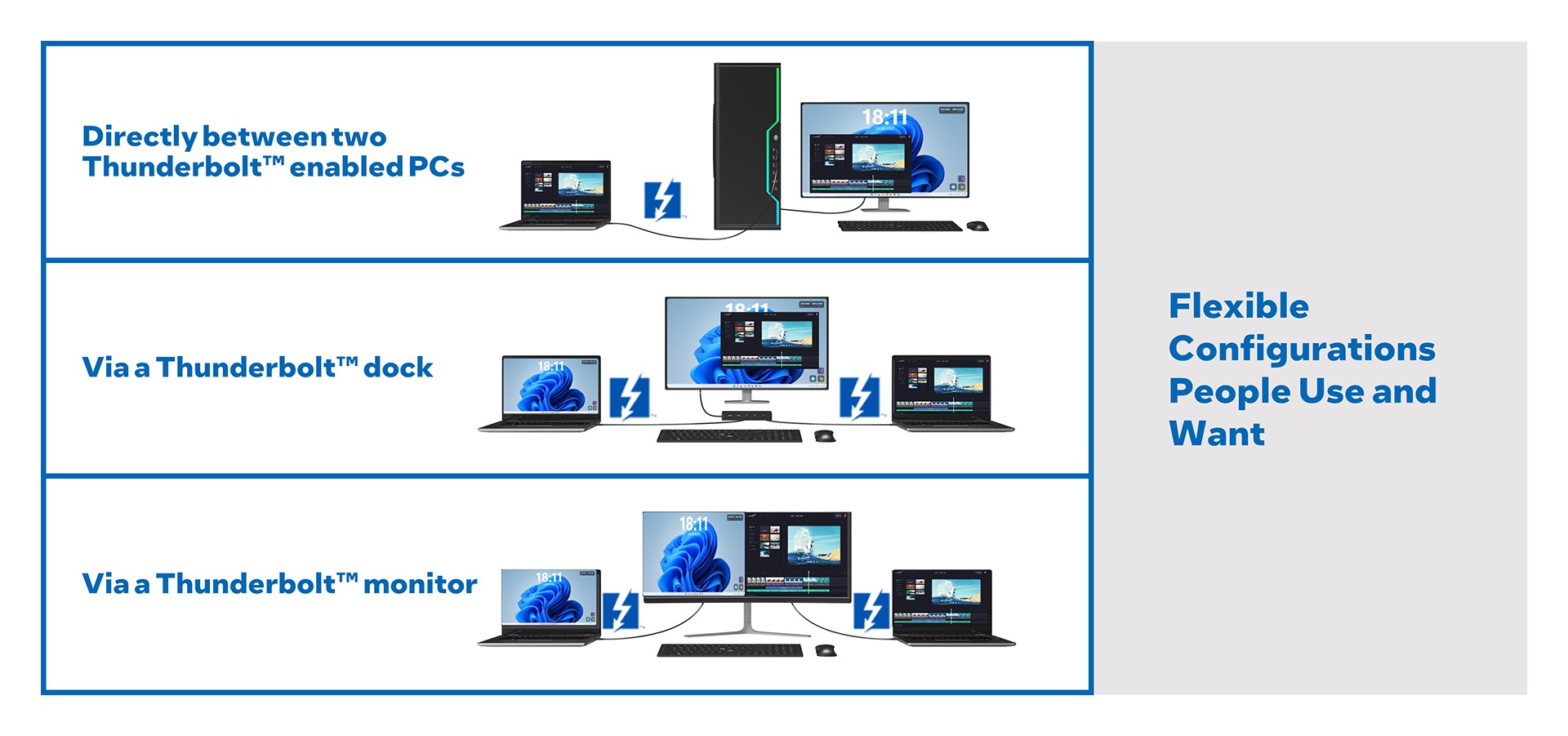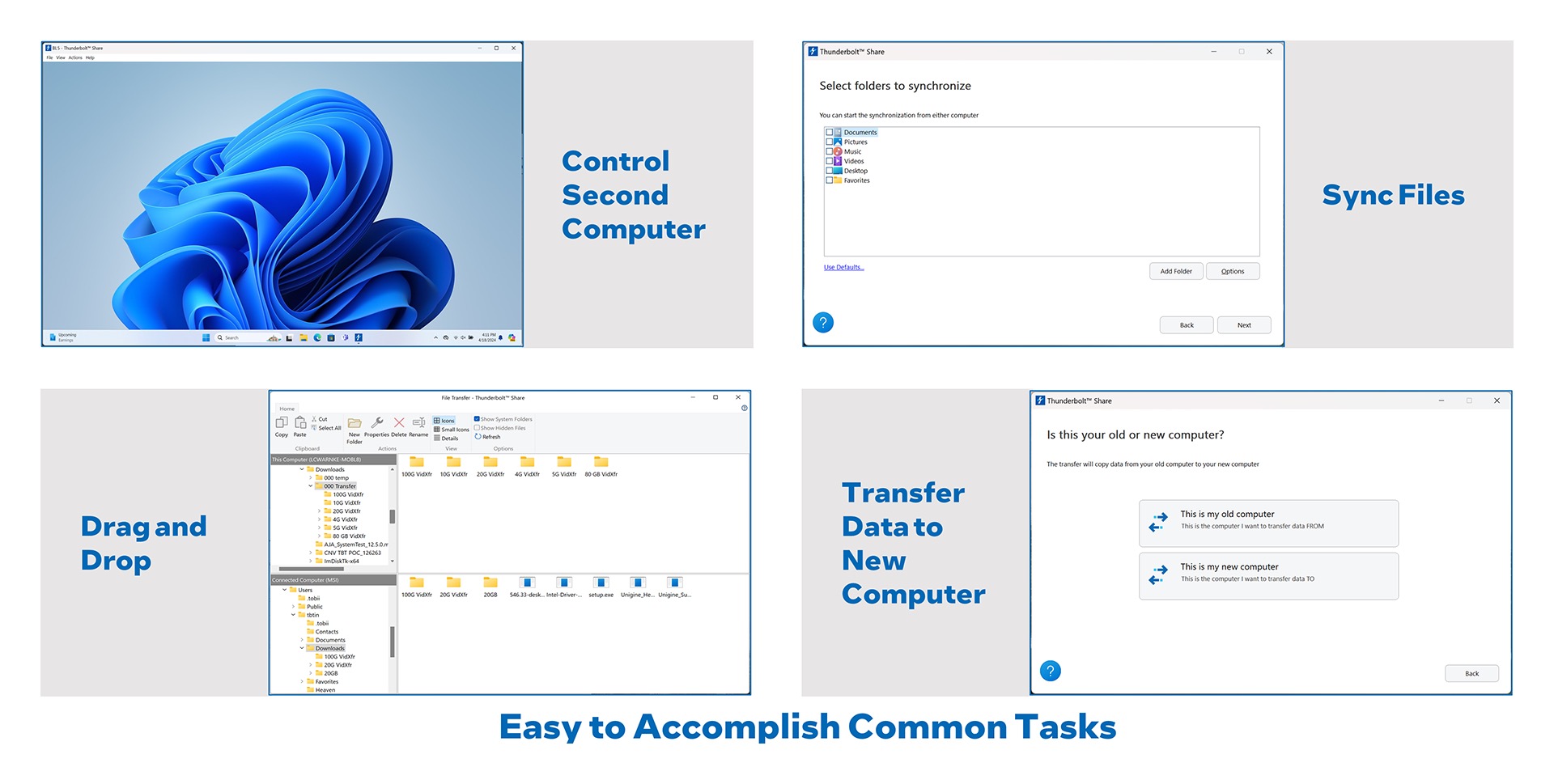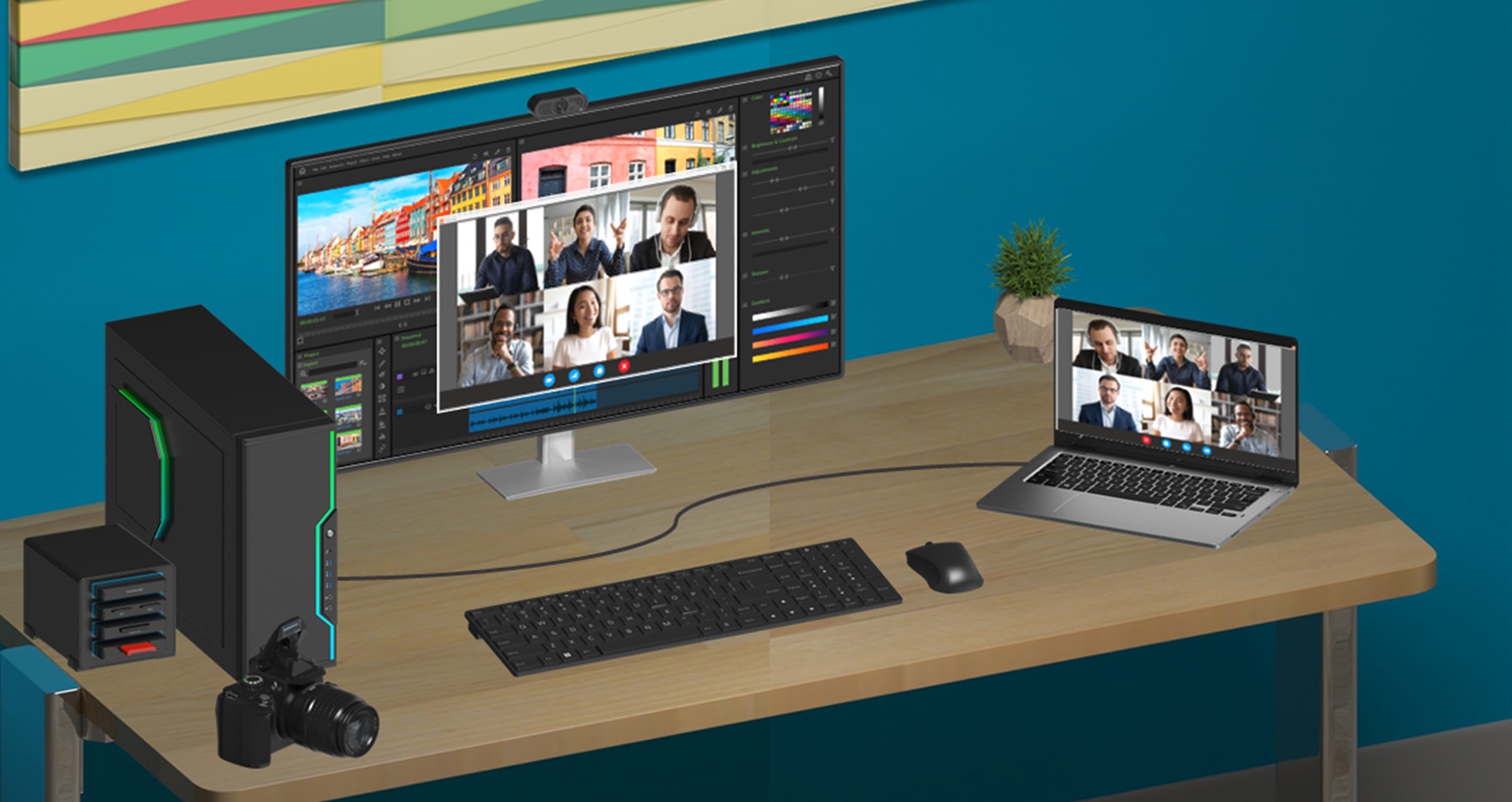Intel's new Thunderbolt Share provides file and screen sharing without hurting network performance
The new software leverages Thunderbolt technology to get more out of your PCs at home or in the office.

Today, Intel announced the launch of Thunderbolt Share software, which is designed to be an easy, fast, and efficient way to share screens and files across two PCs. With a growing number of people across most PC segments using multiple computers, this new software is designed to allow customers to make the most of their PCs without bogging down WiFi or ethernet networks.
Thunderbolt Share will allow PC owners to connect their two computers with a wired connection that leverages Thunderbolt’s speed, low latency, and built-in security. It allows PC-to-PC access that shares the screen, keyboard, mouse, and storage. The software also enables folder synchronization or easy drag-and-drop file transfer between the computers.

According to Jason Ziller, Intel vice president and general manager of Client Connectivity, this technology “delivers on our aspiration to bring innovative solutions to the market and deliver new experiences for users to get the most out of their PCs.” Intel said that Thunderbolt Share will work with Thunderbolt 4 or 5 PCs, docks, and monitors.
In one use case scenario, you could quickly and easily transfer your data and files from an old PC to your new computer. This reduces the steps and time needed to get that new PC up and running. Previously, you would have to transfer the files to an external drive, unplug that drive, move it over to the new computer, and then plug it into that PC and copy the files. With Thunderbolt Share, you just connect the two PCs with a Thunderbolt cable, then drag and drop the files.

Thunderbolt Share also provides uncompressed screen sharing between two PCs in the original resolution of the source computer. It also claims low latency for a smooth, responsive experience that includes the screen, keyboard, and mouse with full HD screen mirroring at up to 60 frames per second (fps). Higher resolutions could result in fewer frames per second, but Ziller said it would still be a “great experience.”

Intel assured customers that security and privacy would not be compromised when using Thunderbolt Share. The software uses Intel VT-d-based data protection, honors User Access Control through Windows password-locked screens, and only allows certain operations to have local access.
The connection is also exclusive to the Thunderbolt Network for enhanced security.
Get Tom's Hardware's best news and in-depth reviews, straight to your inbox.
Thunderbolt Share will initially support only Windows-based PCs. However, Ziller did say that Intel could explore expanding to other operating systems in the future.
Intel announced that Thunderbolt Share will be offered to select PCs and accessories in the second half of 2024. The tech giant said to look for upcoming announcements from Acer, Belkin, Kensington, Lenovo, MSI, Plugable, Promise Technology, and Razer. The tech giant said more partners are coming soon.

Jeff Butts has been covering tech news for more than a decade, and his IT experience predates the internet. Yes, he remembers when 9600 baud was “fast.” He especially enjoys covering DIY and Maker topics, along with anything on the bleeding edge of technology.
-
The article is missing one point which also needs to mentioned and highlighted a bit more clearly though.Reply
I mean to say that not all devices with Thunderbolt ports will support 'Thunderbolt Share'. Since Intel says it’s licensing 'Thunderbolt Share' to select partners, you’ll need to buy at least one certified device in order to use the 'Thunderbolt Share' software, which is tied to hardware.
According to Intel's specifications, at least one of the PCs or docking stations must have a 'Thunderbolt Share' license. So 'Thunderbolt Share' needs to be licensed on one of your devices (either a PC or a docking station).
BTW, Thunderbolt Share sounds a bit like the "Target Disk Mode" on Mac computers. Although, this only works with one of the devices booted into a special recovery mode. -
Although, it won’t work for legacy Thunderbolt 3 or USB devices either — not officially, anyway, but there is a workaround.Reply
-
Artem Tepponen Weird. Macs had Thunderbolt networking for ages. Why should we have some special software with stupid licence?Reply -
td47 I always have my systems set up to have the same Windows login/pw and set sharing on for those folders/libraries that I need network access to. If you have a well set up router and WiFi (i.e. extender or mesh in a large house of Home/Office), then there is no real issue using DRAG/DROP or folder sync software do do this.Reply